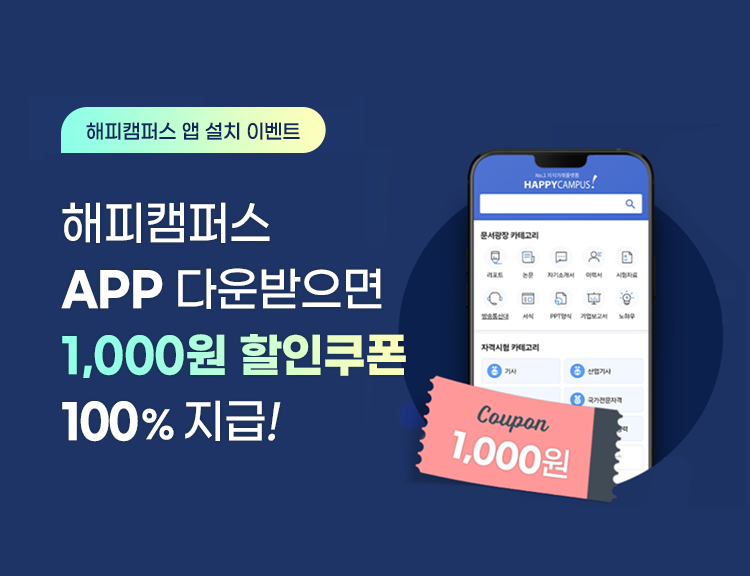EFFECTS OF PARASOCIAL RELATIONSHIP ON CUSTOMER EQUITY IN THE SOCIAL MEDIA CONTEXT
* 본 문서는 배포용으로 복사 및 편집이 불가합니다.
서지정보
ㆍ발행기관 : 글로벌지식마케팅경영학회(GFMC)
ㆍ수록지정보 : Global Marketing Conference
ㆍ저자명 : Chun Lin Yuan, Juran Kim, Kyung Hoon Kim, Pekka Mattila
ㆍ저자명 : Chun Lin Yuan, Juran Kim, Kyung Hoon Kim, Pekka Mattila
영어 초록
Introduction Driven by the rapidly evolving media landscape, firms extensively use social media to engage with their customers (Avery et al., 2010). Today, social media is an integral part of an individual’s daily life, which makes a vital venue through which companies connect with customers (Men & Tsai, 2011; Utz, 2009). Given the increased use of social media, recent studies have investigated how social media cultivates customer relationships with celebrities and/or media personalities (e.g., Smith, 2010). In light of the effectiveness of social media as a marketing tool, it is noteworthy to analyze the source power of celebrities and social relationships and consider how to take advantage of the power. The parasocial relationship is founded upon the communication process, which is an important factor in understanding the relationship between media and users. Parasocial relationships differ according to the motives for using social network service (SNS), while connection and attachment to celebrities, such as having empathy for a particular celebrity, is affected by celebrity source credibility. (Ohanian, 1990). The purpose of this study is to clarify the relation between parasocial relationships and customer equity in the social media context. The study investigates effects of motivations to use SNS and source credibility on parasocial relationships, as well as the effects of parasocial relationships on attitude and customer equity, and customer lifetime value. Theoretical Frameworks In this study, parasocial relationship refers to a virtual intimacy between a media personality and the media users, in other words, it is a psychological, interpersonal relationship unilaterally formed by users based on proximity, similarity, and attraction to the media personalities (Rubin & Step, 2000). When a parasocial relationship is formed, the media consumer appreciates the values and motives of the media character, often viewing him or her as a counselor, comforter, and model (Horton & Wohl, 1956). When using an SNS, users’ communication habits and their selection of social network services vary according to their motives, which in turn affect the parasocial relationships with celebrities via SNS. Motives for using SNS, specifically, information seeking, entertainment, and social connection may have a positive relationship with parasocial relationships. Source credibility, the positive characteristics of a communicator that affect the receiver’s acceptance of a message, positively influences parasocial relationships (Ohanian, 1990; McCracken, 1989) based on expertise, trustworthiness, and attractiveness of the media celebrities. In the social media context, a parasocial relationship has positive influence on attitude toward using an SNS. Social media users engage in finding people with whom they have an offline connection (Ellison, Steinfield, & Lampe, 2007). Social media enables individuals to connect with others all around the world easily, it is not surprising that parasocial relationships influence users’ attitude toward using social media, offering environments to enhance connections (Byod & Ellison, 2008). Further, it is worthwhile to note that parasocial relationships may have a positive influence on customer equity. The key to customer equity lies in understanding the customer lifetime value concept, which refers to the net present value of a customer’s profit stream (Rust, Lemon, & Zeithaml, 2004). Parasocial relationships positively influence brand, value and relationship equity, with the emergence of brands as one of the key organizational assets (Gummesson, 2004). Parasocial relationships explain relationships between individuals and brands, product, symbols, objects, and corporate identities. Such relationships allow individuals to have bonds with brands, trademarks and other symbols, politicians, sportsmen or even actors (Gummesson, 2004). Thus, they positively influence customer equity including brand equity, value equity, and relationship equity. Focused on effects of motivations to use SNS and source credibility on parasocial relationship as well as the effects of parasocial relationship on attitude, customer equity, and customer lifetime value, this study tests the following hypotheses: H1: Motivations to use SNS will have a positive influence on parasocial relationship. H2: Source credibility will have a positive influence on parasocial relationship. H3: Parasocial relationship will have a positive influence on attitude toward using SNS. H4: Attitude toward using SNS will have a positive influence on customer equity. H5: Parasocial relationship will have a positive influence on customer equity. Methods This study used a survey to investigate key questions about the associations between parasocial relationships and customer equity. A total of 350 social media users recruited from Hong Kong and Macau in China participated in the survey. Of the 350 participants, 129 were men (36.9%) and 221 were women (63.1%), with ages ranging from 21 and 35 years old (mean = 25.6 years). This study measured motivations for using SNS on a five-point Likert scale (1 = strongly disagree; 7 = strongly agree), which was adapted from an existing motivation scale (Leung, 2009; Leung & Wei, 1998; Sheldon 2008). To measure source credibility, this study used a five-point Likert scale, which was also adapted from an existing source credibility scale (Eisend & Langner, 2010; Priester & Petty 2003). Parasocial relationships were measured on the basis of user responses to 17 items on an existing five-point scale that assessed parasocial relationships (Koeppel et al., 1993). This study measured attitude toward using SNS through an existing scale (Venkatesh, Morris, Davis, & Davis, 2003). Customer equity was measured using an existing five-point scale (Keller, 2003; Rust et al., 2004) that elicited user responses to 13 items. Customer lifetime value (CLV) was calculated only for the customers in the sample, and CLVs were calculated separately before the average was taken by using the equation below: The CLVij of customer i to brand j, is given as: Tij= Frequency of purchases by customer i for a specific period of time dj= The rate of discount offered by company j fi= Annual average frequency of purchases by customer i for a certain period of time Vijt= The amount of purchase of brand j by customer i for a period of time t πijt= Expected profits by purchase unit of brand j by customer i for a period of time t Bijt= Probability that customer i buys brand j in purchase t Results The overall goodness-of-fit for this measurement model was acceptable (Chi-square = 8.218, df = 5, p = 0.145, GFI = 0.992, CFI = 0.991, RMR = 0.095, RMSEA = 0.043). The reliability coefficients of all 20 motivation measures were 0.885, and they were based on three factors of information seeking, entertainment, and building relationships. The reliability coefficients of all 16 source credibility measures were 0.924 with three factors of attractiveness, expertise, and trustworthiness. The reliability coefficients of all 17 parasocial relationship measures were 0.866 with three factors: proximity, similarity, and attachments. The reliability coefficients of all 13 customer equity measures were 0.838 with three factors of value equity, brand equity, and relationship equity. Cronbach’s alpha for attitude was 0.792. The coefficients indicate the acceptable reliability of the measures. Motivations to use SNS showed statistically positive effects on parasocial relationship (β = 0.151, p < 0.001). Specifically, entertainment (β = 0.148, p < 0.01) and building relationships (β = 0.093, p < 0.05) motivations showed significant positive effects on parasocial relationships while information seeking motivation did not show significant effects on parasocial relationships (β = 0.074). Source credibility showed statistically positive effects on parasocial relationship (β = 0.316, p < 0.001). Thus, the results supported H1 and H2. Parasocial relationships showed statistically positive effects on attitude (β = 0.295, p < 0.001) and customer equity (β = 0.272, p < 0.001). Attitude showed statistically positive effects on customer equity (β = 0.172, p < 0.001). Thus, the results supported H3 and H4. Customer equity showed statistically positive effects on customer lifetime value (β = 3.452, p < 0.001). Thus, the results supported H5 (see Table 1, Figure 1). Discussion This study contributes to clarifying parasocial relationships in the social media context and determining the relationships between parasocial relationship and customer equity. This study contributes to the theoretical foundation and implications of parasocial relationships and customer equity. Specifically, motivations to use SNS and source credibility positively influence parasocial relationship. Parasocial relationships have positive effects on attitude and customer equity. Customer equity, in turn, has positive effects on customer lifetime value. The study is the first of its kind on the effects of parasocial relationships on customer equity in the social media context. The study finds that motivations and source credibility are important antecedents of consumers’ parasocial relationships formed via social media. Parasocial relationships have a positive effect on attitude and customer equity, and customer equity leads to increased customer lifetime value. This study suggests that parasocial relationship is one of the strong influential variables on customer equity as it improves customer lifetime value. Thus, marketers should definitely consider parasocial relationship management in the social media context while tailoring their brand communications to their most profitable customers and enhance their customer lifetime value.참고 자료
없음"Global Marketing Conference"의 다른 논문
 THE ROLES OF GREEN PACKAGING IN UGLY FOOD PURCHASE INTE..22페이지
THE ROLES OF GREEN PACKAGING IN UGLY FOOD PURCHASE INTE..22페이지 THE IMPACT OF INDUCED AWE ON ETHICAL TOURIST BEHAVIORS5페이지
THE IMPACT OF INDUCED AWE ON ETHICAL TOURIST BEHAVIORS5페이지 A BIBLIOMETRIC ANALYSIS OF SPIRITUAL TOURISM RESEARCH15페이지
A BIBLIOMETRIC ANALYSIS OF SPIRITUAL TOURISM RESEARCH15페이지 SOCIAL NETWORK ANALYSIS AND RESPONSE TIME TESTING: CONS..11페이지
SOCIAL NETWORK ANALYSIS AND RESPONSE TIME TESTING: CONS..11페이지 THE EFFECTS OF PARA-SOCIAL INTERACTION ON ONLINE CELEBR..3페이지
THE EFFECTS OF PARA-SOCIAL INTERACTION ON ONLINE CELEBR..3페이지 THE INFLUENCE OF OPINION LEADERS ON DAILY DEALS USER’S ..3페이지
THE INFLUENCE OF OPINION LEADERS ON DAILY DEALS USER’S ..3페이지 HOW IMMERSIVE RETAILING AFFECTS CONSUMERS’ URGE TO BUY:..6페이지
HOW IMMERSIVE RETAILING AFFECTS CONSUMERS’ URGE TO BUY:..6페이지 KEY TO SUPERSTARDOM IN A GLOBALISED MARKET: THE ROLE OF..6페이지
KEY TO SUPERSTARDOM IN A GLOBALISED MARKET: THE ROLE OF..6페이지 A POST-PANDEMIC LOOK AT TOURISTS’ PERCEIVED COOLNESS OF..4페이지
A POST-PANDEMIC LOOK AT TOURISTS’ PERCEIVED COOLNESS OF..4페이지 EXTRACTING OFFLINE RETAIL SHOPPING PATTERNS: OLLABORATI..5페이지
EXTRACTING OFFLINE RETAIL SHOPPING PATTERNS: OLLABORATI..5페이지

























